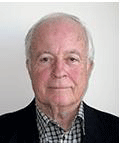The “time value of money” is at stake when you are trying to forecast demand at ATM machines and of course, customer satisfaction. Trying to get the right amount of cash for pay day and holidays requires some pretty complicated models to get this right. The reality is that these methods and approaches of forecasting daily cash demand are just as necessary when forecasting what is perceived to be “simpler” problems. The S&OP process has treated the importance of a baseline forecast as just a “stepping stone”. A big reason why the S&OP process is leaned on so heavily is baseline forecasts are often generated using a simplistic model that doesn’t capture patterns into a model, but rather fits a pre-specified model to the data. A quality baseline model and forecast can alleviate a lot of the work downstream. Another comment about adjusting forecasts is that if it is for a reoccurring reason it can be added as a causal variable to the model and utilized “in-line” or also “in-model”.
When building a forecasting model, it’s important to recognize how variables like “day of the week”, “week of the year”, “day of the month”, and holidays can capture the swings in demand and allow you to plan for them. It’s not just the holidays, but the days before and after the holidays that need special consideration as demand ebbs and flows around these events.
Furthermore, we often hear “I am fed up with fixing forecasts”. This can be alleviated by taking a more rigorous approach to identifying patterns rather than have some list of 50 models to be forced onto a data-set “hoping for the best” without any care for what patterns are occurring in the data. The “one size fits all” modeling approach by taking 50 models and forcing them on a data-set is like fitting a square peg in a round hold. Customized suits are exactly that. Custom suits are yes custom and they take a little work requiring the expense of a tailor, but you have a proper fitting product at the end of the process. “One size fits all” can result in a hat that just doesn’t fit your head as we have seen!
Join us at IBF’s Supply Chain Forecasting & Planning Conference in Phoenix to further discuss the above. Plus, our discussions will also cover “motherhood and apple pie,” what you need to know to make better decisions about what makes a good baseline forecast.
Your comments and feedback are welcome here!
Mark Frost
Director of Business Strategy and Decision Science
Fiserv
David Reilly
Sr. Vice President
Automatic Forecasting Systems
See MARK FROST & DAVID REILLY Speak in Phoenix at IBF’S:
$695 (USD) for Conference Only!
February 22-23, 2010
Phoenix, Arizona USA




